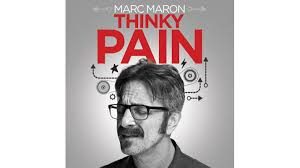The First Salute
Book written by Barbara Tuchman
I don’t know about you, but I have rather limited access to original historical source material. Even with the advent of so much information at our fingertips, it can still take a degree in advanced library sciences and deep pockets for access fees to find original materials. I’ve toured a few museums with their deep cuts from the past and visited any number of places where important people walked and great events occurred. And that’s all been accompanied by running commentaries from every history teacher I ever had.
Even with the best of intentions, those teachers were limited by time and textbook content to covering certain events in a certain way. Virtually every history course is geared toward turning the past into a long story with a beginning, middle, and end- usually a happy ending when we are young. More than that, history as taught usually has defined heroes and villains, so much so that we forget that those people actually lived and had little perception of themselves in either role- certainly not as the antagonist.
Even the best historical authors fall into the same pattern. After all, we the audience are only human and we remember stories and stories have a certain form geared toward our memories. We do complexity by learning to ask questions of knowledgeable sources. We also develop tools to analyze their answers. That doesn’t make it any easier to remember the answer. If it were otherwise, we would all be chatting about the Theory of Relativity and Global Trade Policy with more than a few choice phrases. Instead, we bond over movies and sporting events and gossip (which is life become story).

For me,
Barbara Tuchman has always been someone available to answer questions. She wasn’t easy to find and her books are thick as the past they chronicle. On the other hand, she has done the heavy lifting. Her research always turned up endless facts which make sense of history. She answers those questions that always lurked beneath any high school history class.
For example, did you ever wonder how come the American Revolution seems to play as a noble fight between two fair-minded armies in which the larger army never really behaved atrociously, despite the fact that the British army were happy to do heinous things everywhere else? Oddly enough, you may not wonder about that anymore in this age of the History Channel. We have so many video portraits of the horrors of life in the past. The colonies always looked much cleaner and war seemed remarkably bloodless in older portraits.
More so, Tuchman had an opinion. Other historians may have had opinions in the 1950s, but they usually kept them to themselves. With personal journalism all too commonplace (even here), her injections of considered thought probably do not seem so unusual, but that reduces none of her brilliance. Of all those voices in my head when I travel, hers is usually the most welcome.
What’s it all about?
You’ve Got to Check This Out is a blog series about music, words, and all sorts of artistic matters. It started with an explanation. 184 more to go.
New additions to You’ve Got to Check This Out release regularly. Also, free humor, short works, and poetry post irregularly. Receive notifications on Facebook by friending or following Craig.
Images may be subject to copyright.

